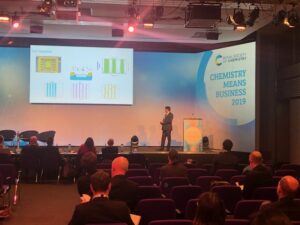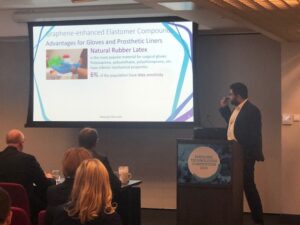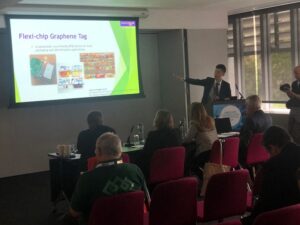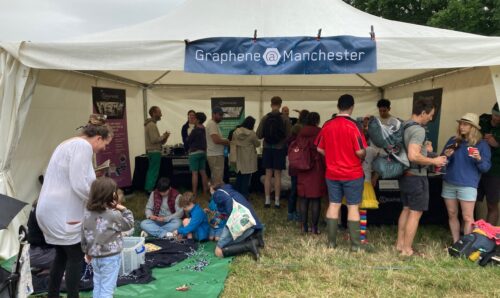From lab to market: how The University of Manchester is driving graphene commercialisation
Applications Graphene Engineering Innovation Centre 31 October 2019
The University of Manchester may have isolated the two-dimensional material but new and exciting developments continue to happen right here on campus. With the completion of the Graphene Engineering Innovation Centre at the end of 2018, the University has the capability to quickly take a potential graphene application from the research lab to a proof of principle product ready for commercial production.
As part of this activity researchers are looking to commercialisation of the revolutionary material and competitions such as the Royal Society of Chemistry’s Emerging Technologies Competition is just one of the outlets available to help advance these technologies.
Out of the hundreds of applications three applicants from the University won through as finalists at the 2019 competition. The initiative from the Royal Society of Chemistry was targeted at early stage companies and academic entrepreneurs who want to commercialise their technologies to make a global impact.
38 shortlisted entrants pitched their ideas to a panel of expert judges at Chemistry Means Business, on Monday, 28 October. Applications were judged on the degree of innovation of the technology, its potential impact, and the quality of the science behind it.
Detecting the minute
University of Manchester spin out company Riptron were shortlisted in the Energy & environment category. Their patented work focuses on using single layer graphene in sensors to selectively detect low concentrations of common atmospheric pollutants; which means they are able to improve safety and environment monitoring as well as making devices portable and cost effective.
The ground-breaking technology ensures that every atom in graphene is exposed to its environment, allowing it to sense changes in its surroundings. Other potential applications under consideration include food packaging with the ability to detect when food has gone bad or to detect stresses and strains in buildings and bridges.

By no stretch of the imagination
Another University spin out Grafine were shortlisted in the Enabling Technologies category. Their novel formulation techniques disperses a variety of suitable graphenes in elastomers to improve their mechanical, thermal and electrical properties, this shows promise for applications such as surgical gloves and medical prosthetics.
Elastomers and rubbers are used world over in products such as tyres, shoes, gloves, industrial components, construction materials, coatings and medical devices. The global market size for rubber and elastomer products is forecast to be more than £70 billion by 2021.
Graphene has been proven to make rubber more rubbery and successes have already been seen in this field such as the University collaboration with sports shoe brand inov-8 and the world’s first graphene running shoes, proven to be 50% stronger, 50% more elastic and 50% more hard wearing.

Safer, greener food packaging
The final University applicant was Ting Leng from the Department of Electrical and Electronic Engineering who was shortlisted in the Food & Drink category. His entry focused on wireless, battery free RFIDs for food packaging using screen printed graphene inks which are flexible but most importantly non-toxic and recyclable.
One of stumbling blocks to producing RFIDs for food packaging has been the difficulty in using food safe materials that meet the requisite standards. This technology helps to overcome one of these challenges.

There is no denying that graphene has the potential to make real impact in our everyday lives, projects and innovative spin out companies such as these are just one component in realising graphene’s potential by taking lab based concepts to real life applications.
Words by Charlotte Jones
Images by Ray Gibbs




